Zojoji temple is one of the most photogenic tourist destinations in Tokyo. You can find the reason soon after you go through the San Gedatsu Mon, one of the major gates of Zojoji. The contrast between the traditional temple hall, Daiden, and the modern and stylish high steel structure, the Tokyo Tower, must impress you greatly. I love seeing bright smiles on my guests’ faces when I take their photos with the hall and tower behind them.
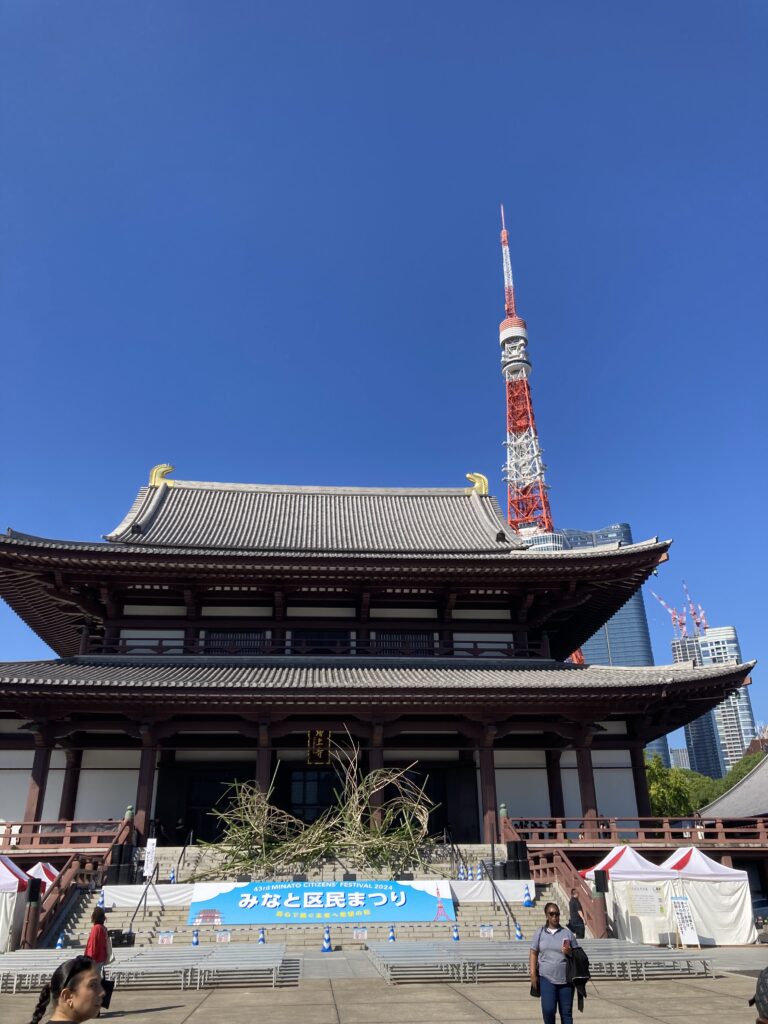
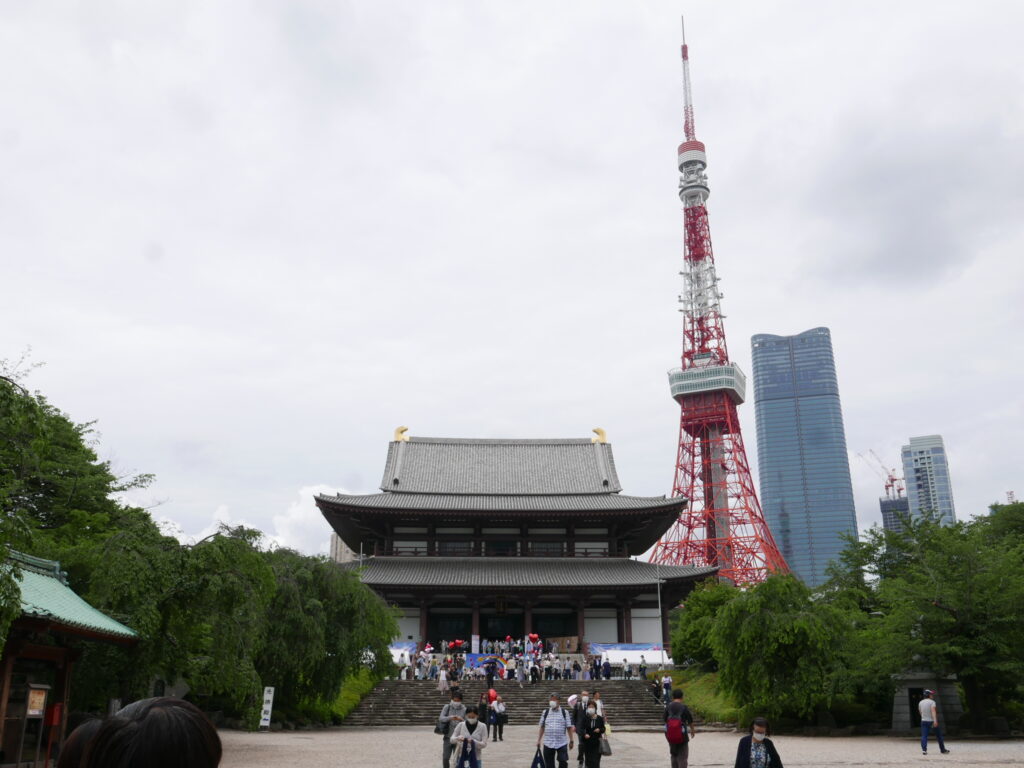
The temple was established west of Edo Castle, now the Imperial Palace, in 1393. It was appointed as the family temple of the Tokugawas, the samurai Shogun family, in 1590 when Tokugawa Ieyasu took control of the Edo area, now Tokyo. Then it was moved to its current location in 1598 as the castle expanded outward. The newly relocated temple occupied a three times larger area than the current precinct (see the picture below). Due to a huge donation from the Tokugawas, the temple buildings and Buddhist housing were made so gorgeously that Edo citizens said it was as beautiful and amazing as Nikko Toshogu, which is now one of the attractive tourist destinations for its intricate, colorful, and traditionally authentic decorations, registered as a UNESCO World Heritage in 1999.
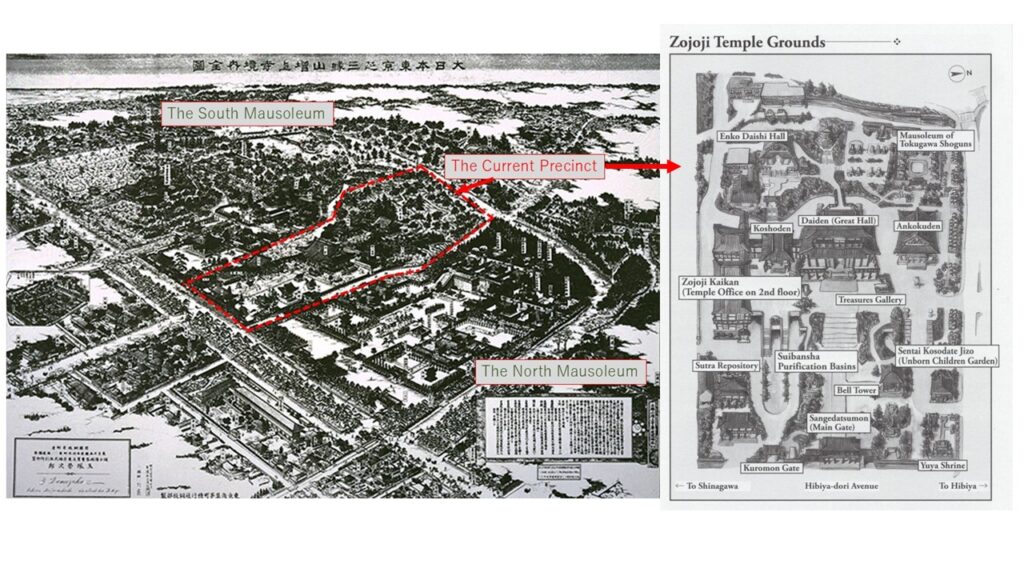
However, the great air raid in Tokyo, during World War Two in 1945, burned and devasted almost all temple structures except for a few facilities. Fortunately, three gates and some small facilities survived the intensive bombing and still stand in the temple. One of them is the San Gedatsu Mon, the middle gate of the temple. (See the photo below)
“San Gedatsu” means liberation from the three worldly passions (greed, hatred, and foolishness) that ordinary people have. It is believed that three Buddha statues and sixteen statues of Arhant, a high-ranked Buddhist disciple, sitting on the second floor of the gate, clean the evil passions of the people passing under the gate, and lead them to the sacred temple precinct.
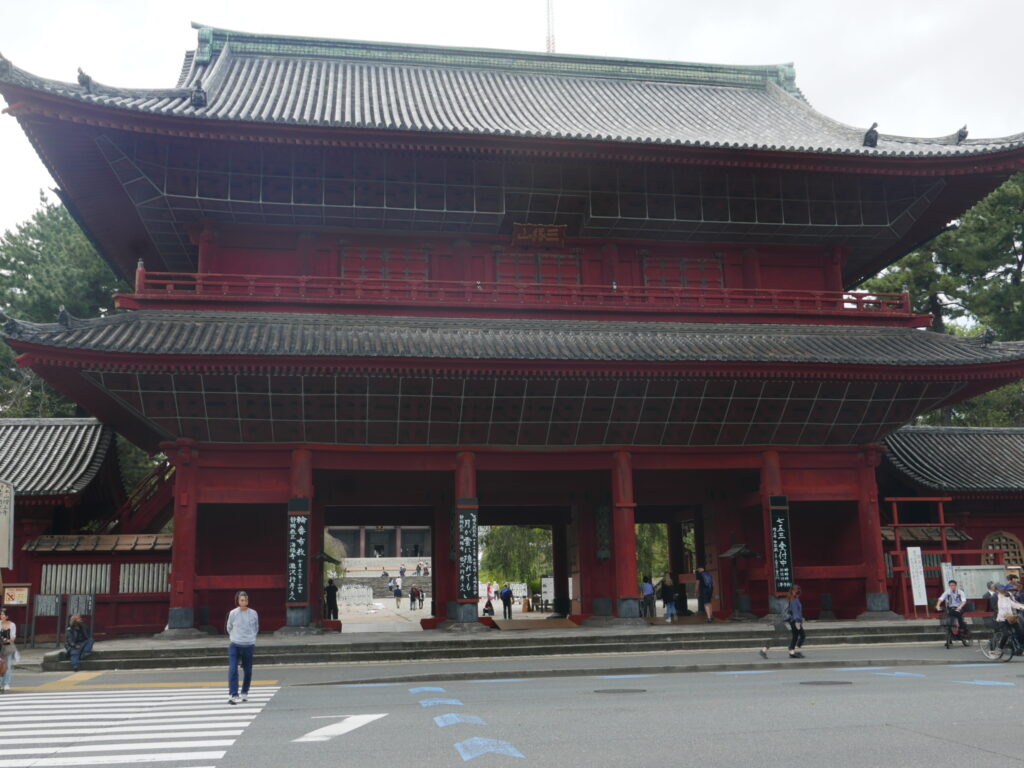
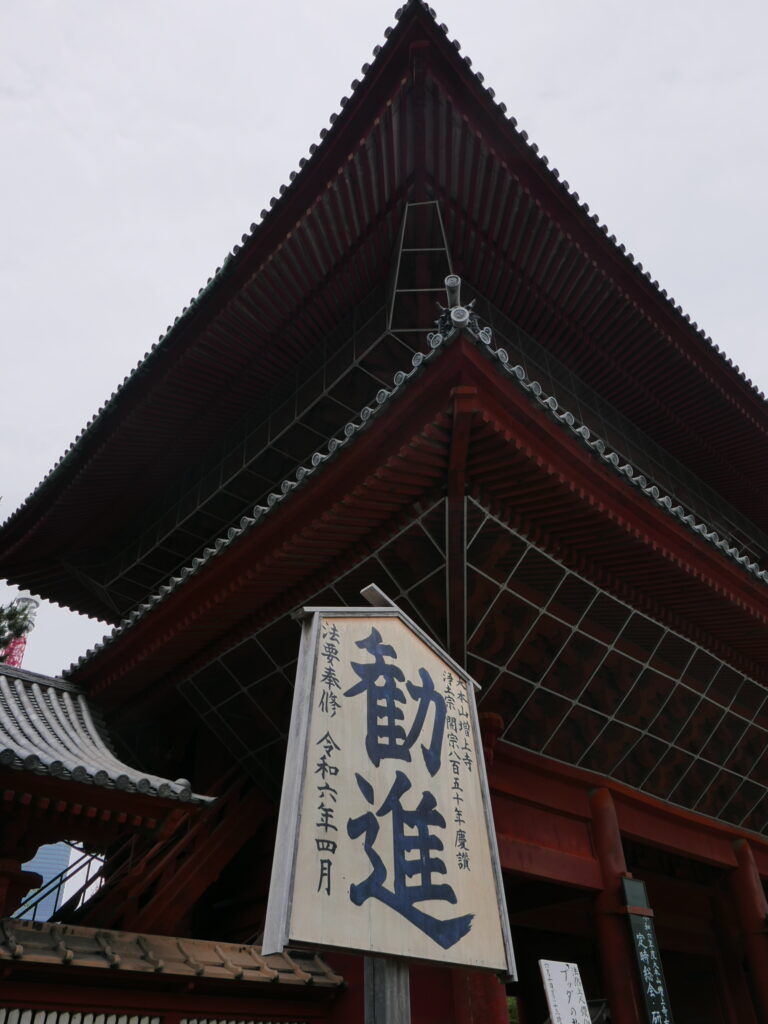
The main hall (in the first and second photos), the worship place, was burned down in World War Two and rebuilt in 1974. It has four stories: the main hall on the second floor, the Buddhist training rooms on the third floor, the waiting rooms for believers on the first floor, and the Treasure Museum on the basement floor. If you have time and don’t mind paying the 700-yen admission fee, I recommend you visit the museum. You can see a 1/10 scale model of Taitokuin Reibyou, the gorgeous mausoleum of the second Tokugawa Shogunate, which burned down in 1945. It is not a mere structure model but also a real work of art by skillful Japanese artisans. It was exhibited at the Japanese-British Exhibition in London in 1910, donated to the British Royal Family after the event, and kept in the British Royal Collection until 2014. Thanks to the kindness of Queen Elizabeth the Second, Her Majesty decided to lend it to the temple for a long term. Since then, Japanese citizens have had the privilege to taste its beauty and learn about the historical and traditional building structure.
The model is so intricate and beautifully decorated that I was about to take pictures, but, unfortunately, photography is prohibited inside the exhibition room, so I cannot share any photos with you. Anyway, I guarantee you it is worth visiting to see it. For your information, I have included the model’s image on the museum’s official website (https://www.zojoji.or.jp/takara/images/mokei/img02.jpg).

The other three gates in the Zojoji area, So Mon, Yushoin Niten Mon, and Kuro Mon, have all survived even the air attack during World War Two. So Mon was the main gate to the former Taitokuin Mausoleum, with two Buddhist guardians called Nioh standing in both columns. Their mouths seem to say “A” and “Un” respectively. The word “A-Un” in Japanese refers to the first and last letters of the Sanskrit alphabet, “a” and “hum.” In esoteric Buddhism, these letters symbolize the origin and ultimate of all things, respectively, and also, in other words, the principle of all things and the wisdom and virtue that will be eventually obtained. The former is sometimes referred to as enlightenment, and the latter is the resultant state of nirvana.
In Japanese, we often use the phrase ”A-Un Breathing.” It means the start meets the end; in other words, it is perfect timing for two people working together, which sounds like one says “A” and another replies “Un” immediately.
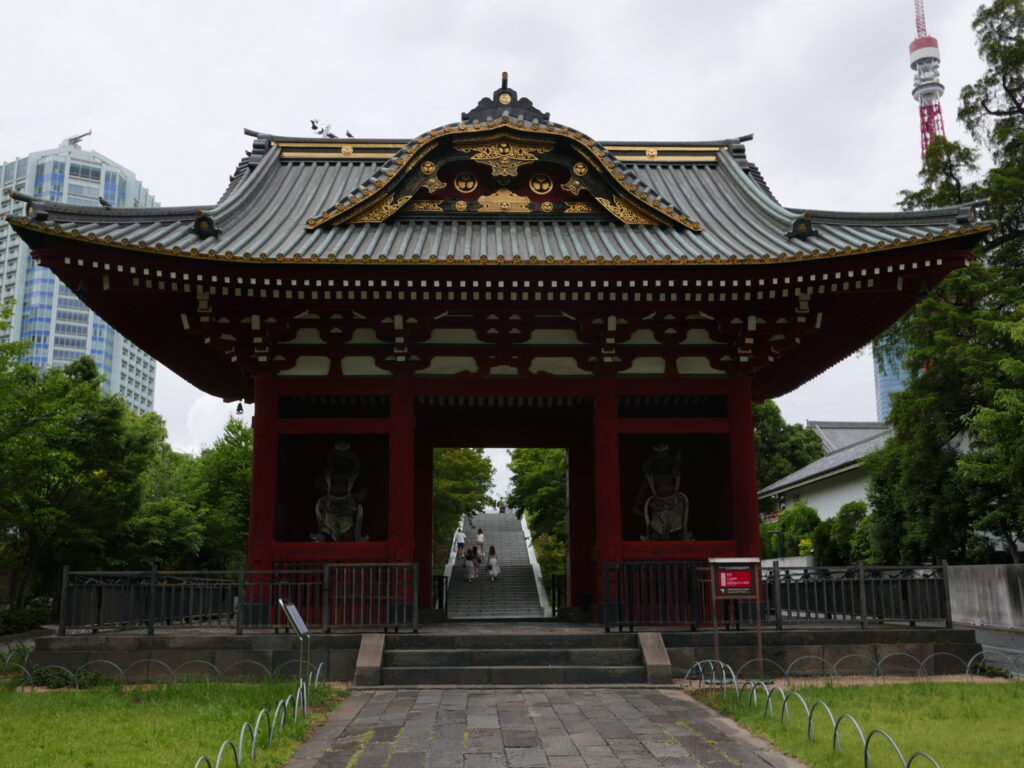
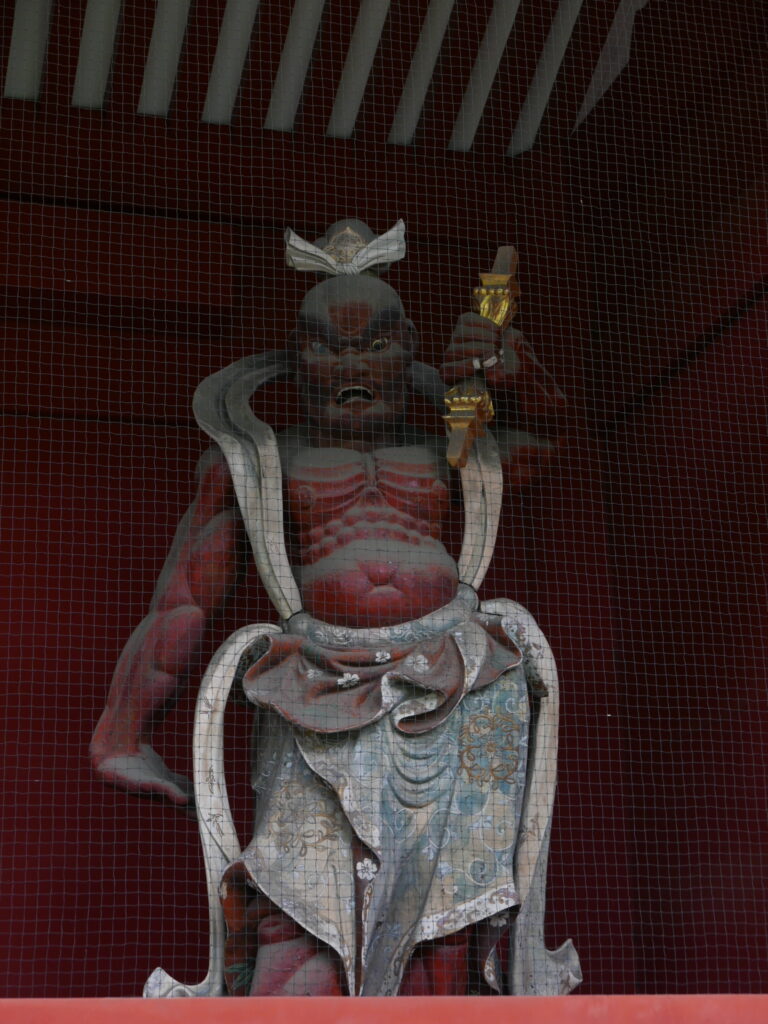
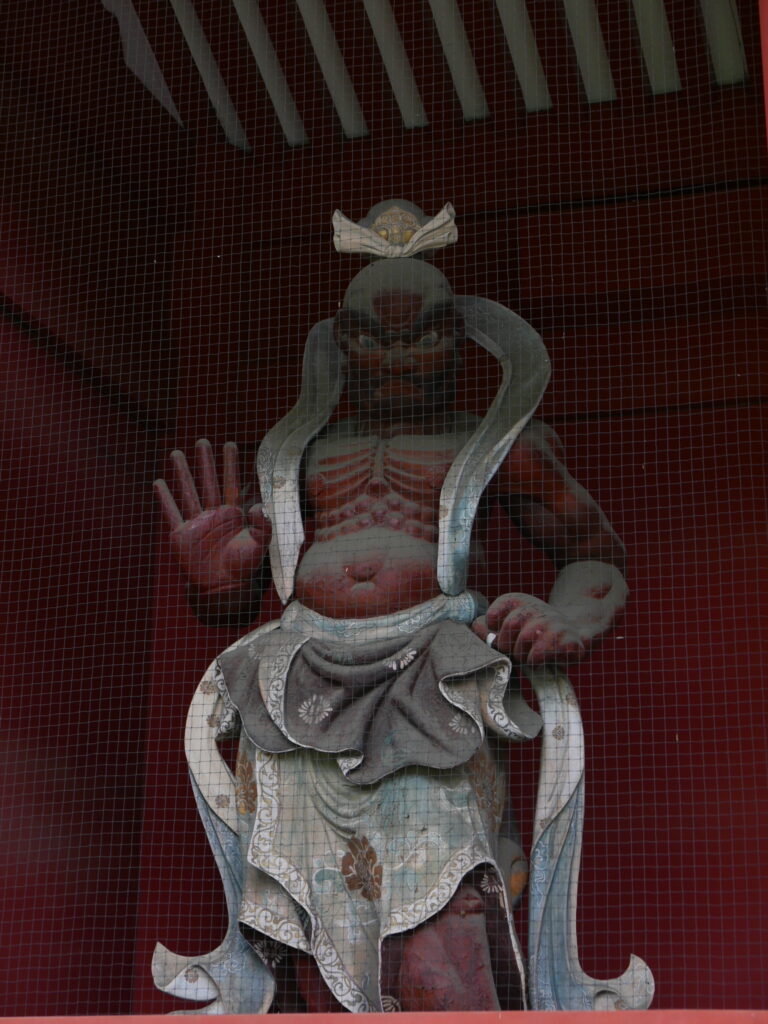
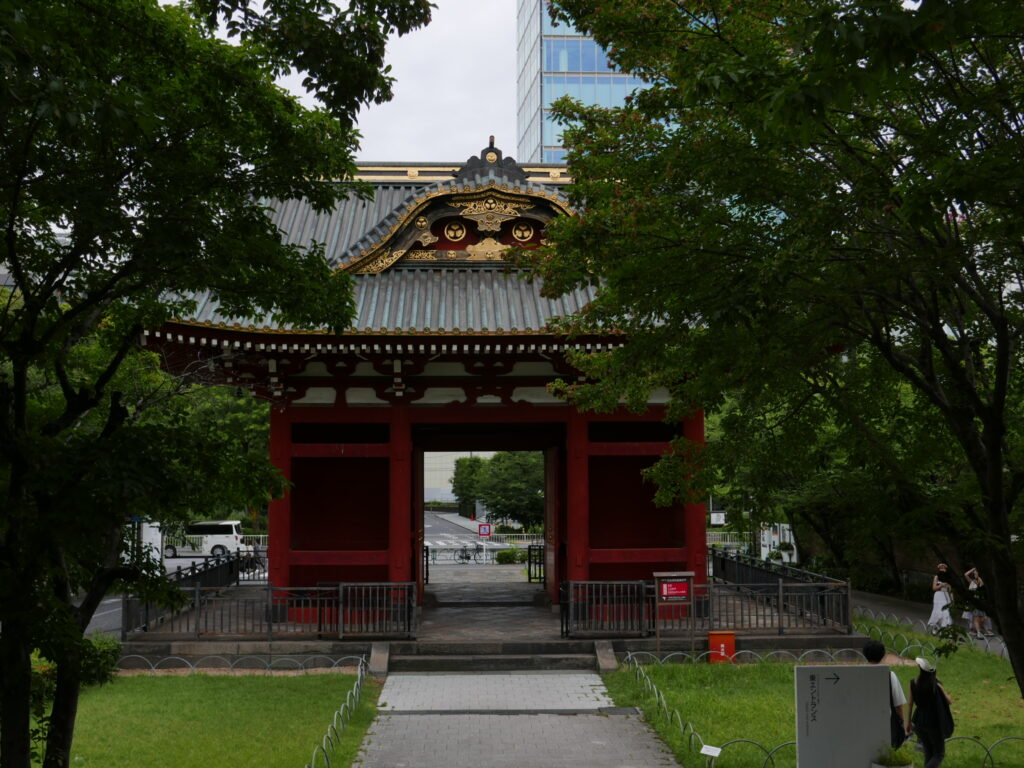
The Kuro Mon, literally Black Gate in Japanese, is now used as the back gate for temple officials, Buddhist priests, and others who serve for the temple. It used to be decorated with “Kuro Urushi,” Japanese black lacquer, but now, sadly, it has lost its beautiful, shiny black color due to not being maintained enough.
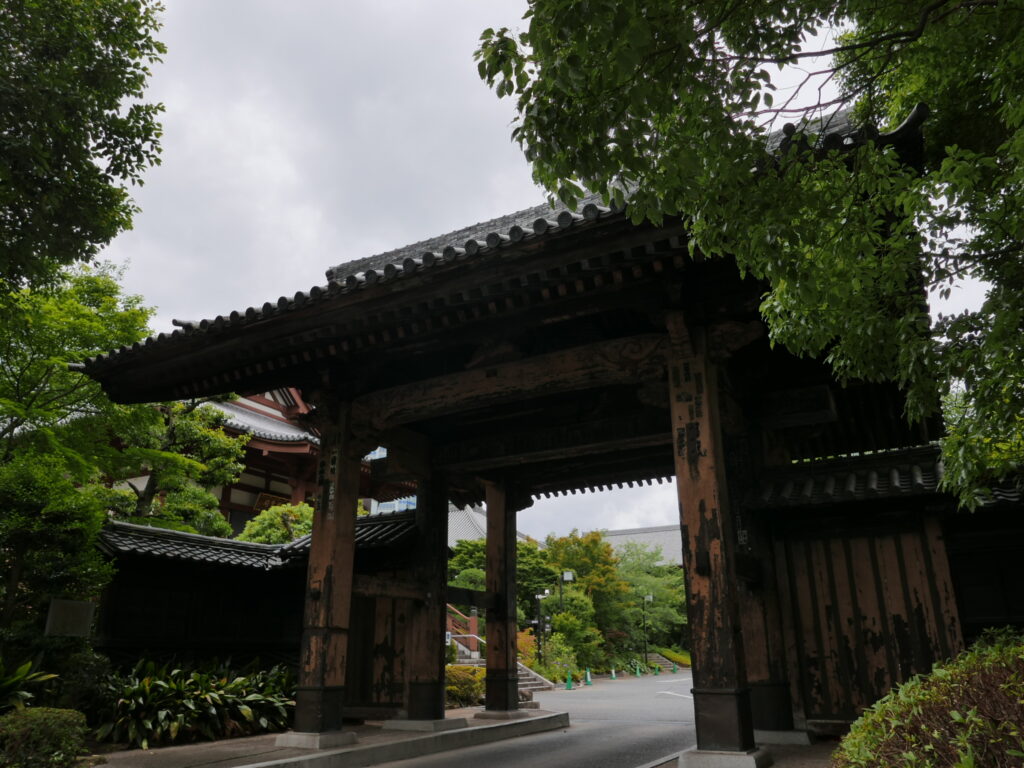
Yushoin Reibyou Niten Mon stands in the Tokyo Prince Hotel’s parking lots next to Zojoji. Before 1900, it was part of the temple precinct. Exhaust gases from cars running on the busy road in front of the gate had damaged it for years. The city authority organized the restoration works, which started in 2015. The four-year redecoration and repair work refreshed it and restored its beauty and dignity.
The gate has two Buddhist deities, Tamon-Ten and Komoku-Ten, in its columns. Tamon-Ten is a Buddhist guardian who raises a lance in his left hand high and also gets respect because he listens to many Buddhist lectures well (“Tamon” means listening well). Komoku-Ten is another Buddhist guardian who disciplines people who committed something wrong and encourages them to learn more about Buddhism for their prosperous lives.
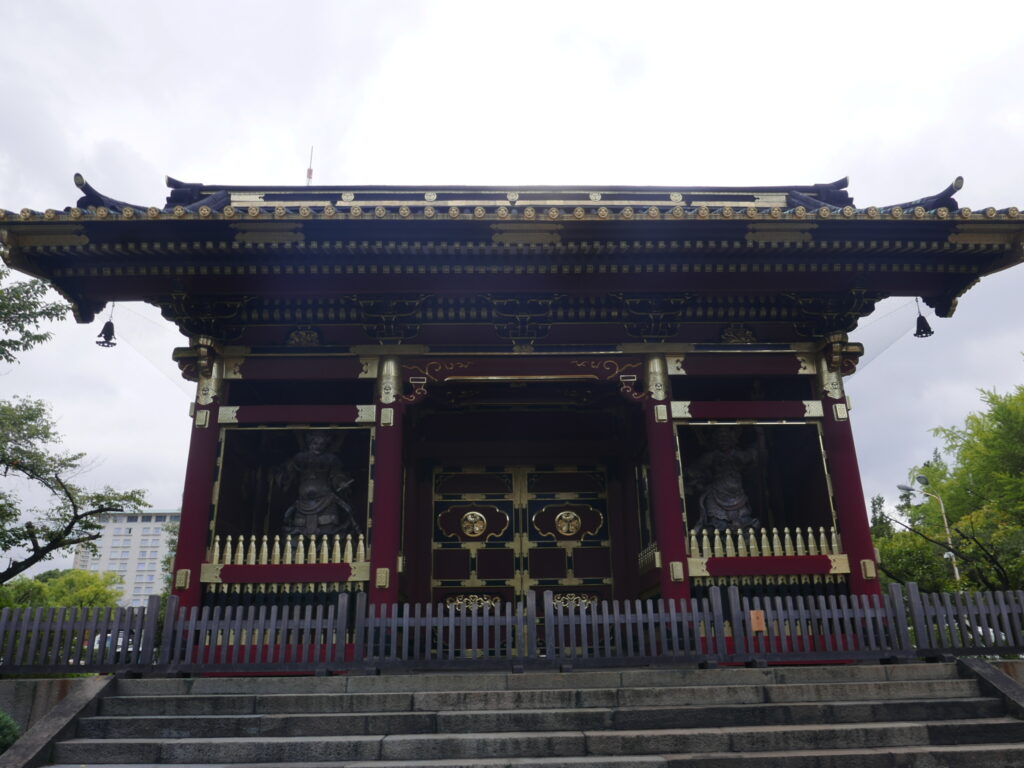
Access
1) 10-minute walk from Hamamatsucho Station on the JR Line or Tokyo Monorail
2) 3-minute walk from Onarimon Station or Shiba Koen on Mita Line
3) 5-minute walk from Daimon Station on Asakusa Line or Oedo Line
4) 7-minute walk from Akabanebashi Station on Oedo Line
5) 10-minute walk from Kamiyacho Station on Hibiya Line
Map
Please refer to the following link to the location on Google Maps.
https://maps.app.goo.gl/261TUnxsfNtLpofT6
Address
4-7-35 Shibakoen Minato-ku, Tokyo 105-0011 Japan
If you need an English-speaking guide to explore Tokyo, please click “Contact me!” below. I am willing to help you create an unforgettable private tour. Let’s enjoy amazing Tokyo with me!
Please also leave your feedback on this post in the comment box at the bottom. I am willing to hear your opinions, requests, and suggestions.
Please click the links to get updated via my X (former Twitter) and Instagram.
X (former Twitter): https://x.com/ToruGuide
Instagram: https://www.instagram.com/toruhigaki/
Please visit the related post below.
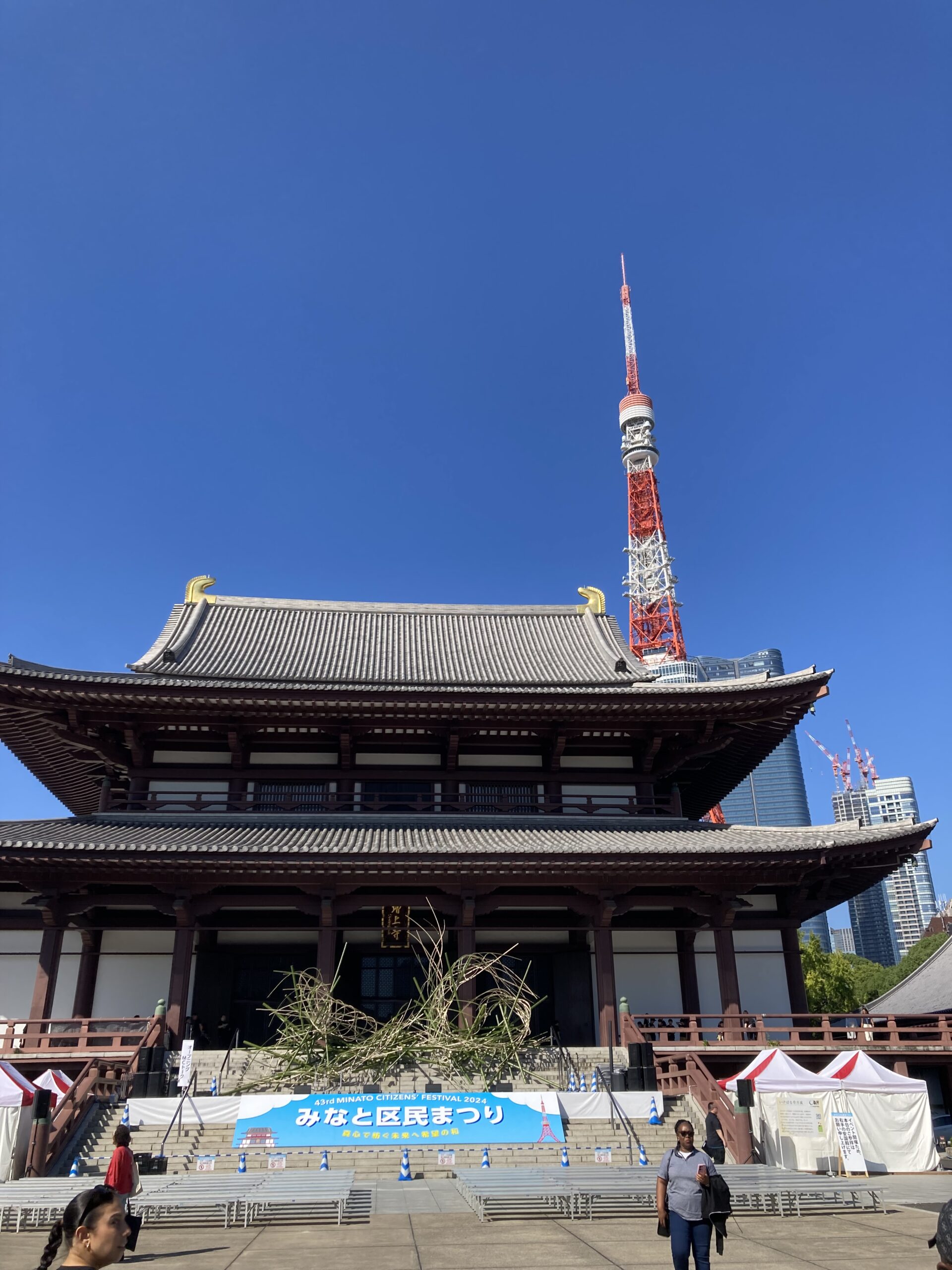




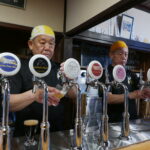
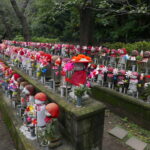
Comment